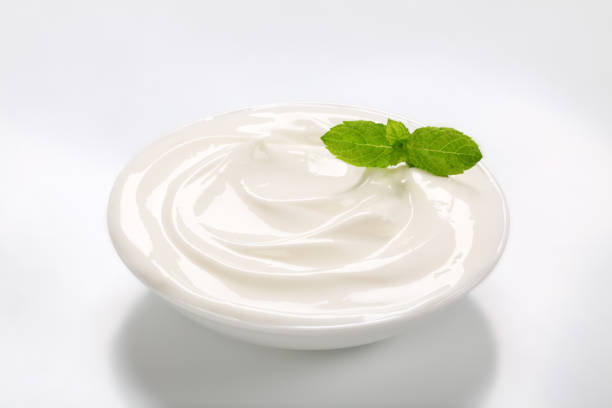If you’re searching for a creamy, versatile cheese you can make in your own kitchen, Fromage Blanc is a fantastic place to start. Many home cheese makers in Australia, and those interested in fromage blanc Australia, feel intimidated by complex recipes or specialty equipment, but Fromage Blanc is refreshingly simple and rewarding. This guide will walk you through every step, from selecting your milk to enjoying your finished cheese, so you can create a delicious spread, dip, or dessert with confidence.
Fromage Blanc is a French-style fresh cheese known for its mild flavour and creamy texture. Unlike yogurt, it’s a bit thicker and can be enjoyed in both savoury and sweet dishes. Whether you’re new to cheese making or looking for a reliable homemade staple, this recipe will help you master Fromage Blanc in your own kitchen.
Understanding Fromage Blanc and Its Appeal
Fromage Blanc is beloved for its smooth consistency and subtle tang. Pure fromage blanc is a white cheese that is traditionally made from cow’s milk and doesn’t require aging, making it an ideal choice for beginners. This cheese is virtually fat free and its mildness means it pairs well with both sweet and savoury accompaniments, from fresh fruit to bread. The consistency can range from runny to thick, depending on how long it is drained, and it can be used in recipes where you cook or serve it fresh.
One of the main challenges in home cheese making is sourcing the right milk and equipment. For the best results, use fresh, raw, or pasteurised milk-avoid ultra-pasteurised milk, as it won’t set properly. Simple kitchen tools, like a large pot, thermometer, and cheesecloth, are all you need to get started.
Step-by-Step Guide: Making Fromage Blanc
Making Fromage Blanc is straightforward, but attention to detail ensures the best results. Here’s how you can produce this cheese at home:
What You’ll Need
Ingredients
- 3.7 L raw or pasteurised cow’s milk (not ultra-pasteurised)
- 1/8 teaspoon mesophilic culture (such as Flora Danica or Danisco MA 4001)
- 4 drops liquid animal rennet, dissolved in ¼ cup cool water
- Salt, to taste
- Optional: fresh or dried herbs and spices
Equipment
- Large stainless steel pot
- Thermometer
- Spoon or ladle
- Colander
- Cheesecloth or butter muslin
Tip: For larger batches or more precise temperature control, consider using a small cheese vat or pasteuriser, which are designed for home and small-scale cheese makers in Australia.
Instructions
- Sterilise Your Equipment
Before starting, thoroughly sterilise all your equipment to ensure your cheese turns out fresh and safe. - Heat the Milk
Pour the milk into your pot and gently heat it to 23.9°C, stirring occasionally to prevent scorching. - Add the Starter Culture
Remove the pot from heat. Sprinkle the mesophilic culture evenly over the surface of the milk and let it rehydrate for 2–3 minutes. - Mix the Culture
Gently stir the milk in an up-and-down motion for about a minute to incorporate the culture. - Add Rennet
Stir the dissolved rennet into the milk, again using gentle up-and-down strokes for one minute. - Let the Milk Set
Cover the pot and let it sit undisturbed for 16 hours at around 22°C (room temperature). If your kitchen is cooler, wrap the pot with towels to maintain warmth. - Check the Curd
After 16 hours, the curds should appear set and separate from the whey, which looks like a mostly clear liquid. - Drain the Curds
Line a colander with cheesecloth and place it over a bowl. Gently ladle the curds into the colander. - Hang and Drain
Gather the ends of the cheesecloth and tie them into a knot. Hang the bundle over a bowl to drain for 6–12 hours, depending on your desired consistency. Less draining yields a texture like whipped fromage blanc or sour cream; more draining gives you a cream cheese-like spread. - Season and Flavour
Once the cheese has reached your preferred consistency, transfer it to a bowl. Salt to taste and mix in any herbs or spices you like. You can also shape the cheese or roll it in herbs for a decorative touch. - Store and Enjoy
Store your Fromage Blanc in the fridge and enjoy within a week.
Serving Ideas for Fromage Blanc
Fromage Blanc’s versatility means you can enjoy it in many ways:
- Serve as a dessert cheese, drizzled with sugar or paired with fruit.
- Use as a dip for vegetables or crackers.
- Spread on bread, crackers, bagels, or toast.
- Substitute for cream cheese, mascarpone, ricotta, quark, or creme fraiche in recipes.
- Add to a cheese platter for family gatherings.
Final Thoughts
Fromage Blanc is a rewarding project for any home cheese maker. With minimal equipment and a bit of patience, you can create a creamy, delicious cheese perfect for countless dishes. Experiment with different herbs and serving styles to make it your own.
Ready to Make More Cheese?
Cheese Kettle offers a range of cheese making equipment, from small pasteurisers to professional-grade vats, designed to help you achieve perfect results at home or in your small business in Australia. Explore our selection and start your next cheese making adventure today.
dventure today.







